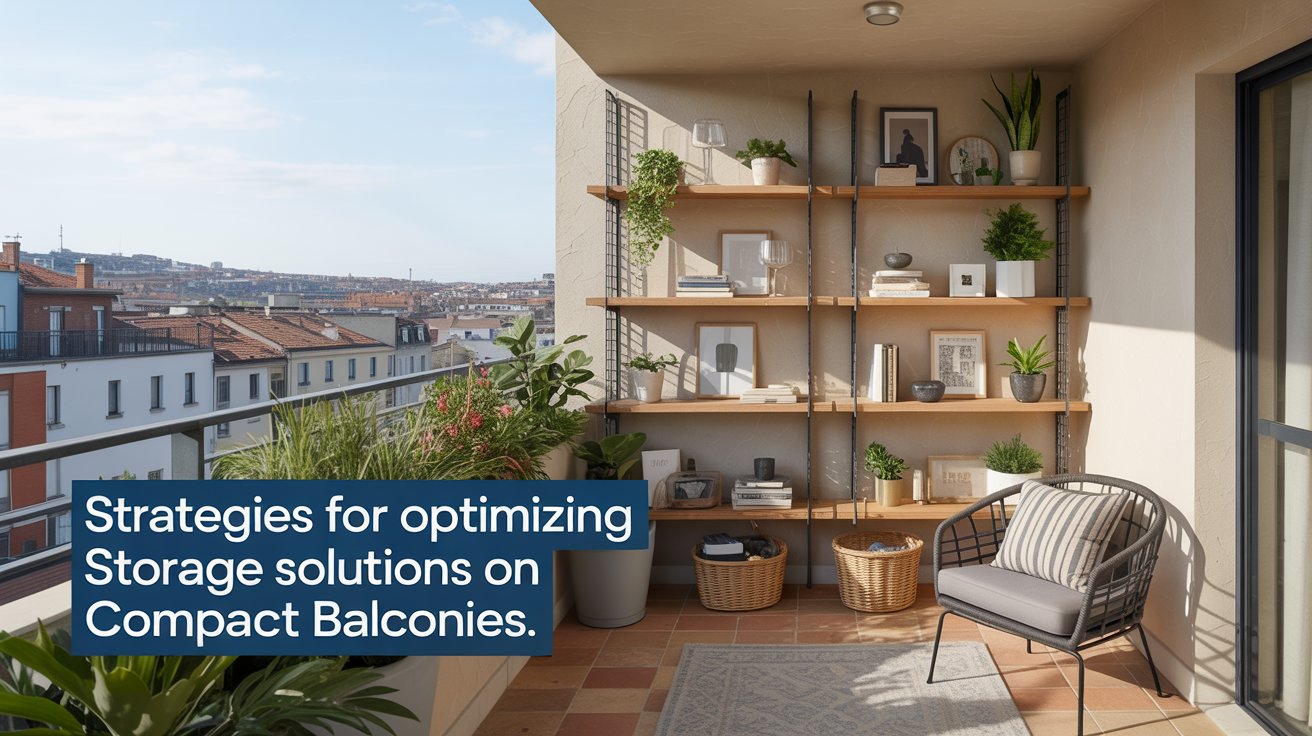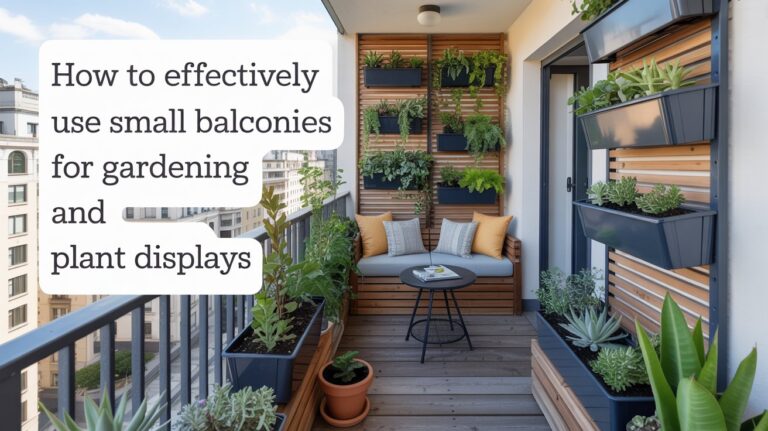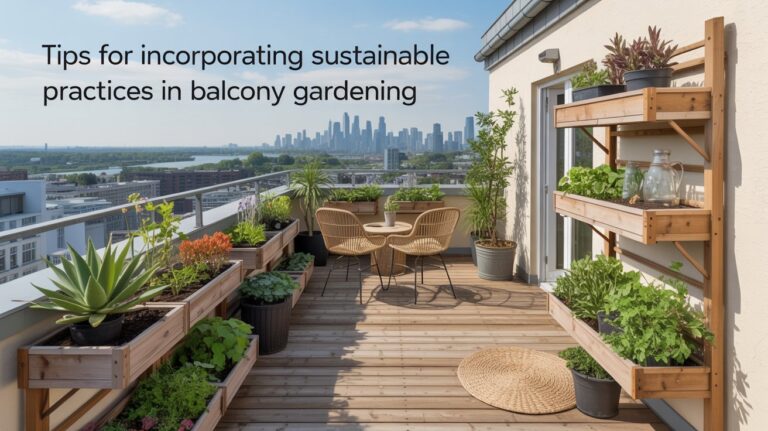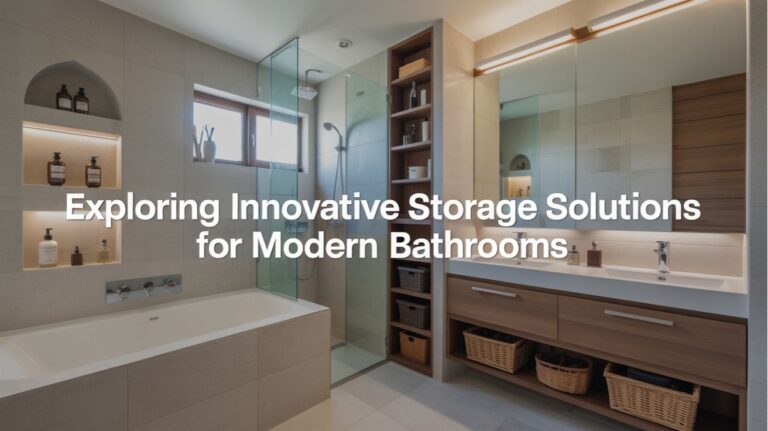Strategies for Optimizing Storage Solutions on Compact Balconies
I have been, or can be if you click on a link and make a purchase, compensated via a cash payment, gift, or something else of value for writing this post. As an Amazon Associate, I earn from qualifying purchases. Please read my full Affiliate Disclosure for more information.
To optimize storage on a compact balcony, first map its dimensions and layout, noting doors, rails, and drainage. Prioritize essentials, separating daily tools from seasonal gear, and use weather-resistant, compact containers. Embrace vertical strategies with wall-mounted shelves and tiered racks to multiply storage without footprint, and choose modular, low-profile furniture with hidden compartments. Weatherproof materials and tight seals reduce maintenance, while discreet lighting and accessible paths preserve sightlines. If you keep exploring, you’ll uncover deeper, actionable tactics.
Key Takeaways
- Assess balcony dimensions and layout to identify optimal anchor points, circulation paths, and wind exposure for sturdy, low-footprint storage.
- Prioritize essentials and use weather-resistant, modular units that align with access points to maximize usable space.
- Utilize vertical solutions like wall-mounted shelves and racks to multiply storage without expanding footprint.
- Choose multi-functional furniture with hidden storage to reclaim floor space while preserving sightlines and accessibility.
- Implement durable, weatherproof materials and routine maintenance to ensure longevity and easy seasonal refreshes.
Assessing Balcony Dimensions and Layout
Evaluating balcony dimensions and layout starts with a precise map of available space. You measure length, width, and height, noting doors, rails, and drainage. This helps you identify the balcony shape, revealing how corners, alcoves, or wraparound angles influence storage options. Consider circulation paths and access to sunlight, ensuring choices won’t obstruct use or violate codes. Map structural constraints by locating posts, beams, and joists, since these dictate where shelves and cabinets can anchor. Document setbacks and overhangs to foresee wind exposure and maintenance needs. With this data, you align layout ideas to maximize efficiency and safety.
Prioritizing Essentials for Outdoor Storage
Prioritizing essentials for outdoor storage means separating must-haves from nice-to-haves based on how you use the balcony. You assess circulation, access, and safety, then assign items to core roles: daily-use tools, seasonal gear, and storage you rarely need. Streamline by pairing items with compact, dedicated containers that resist weather and minimize footprint. Choose modular units that align with your access points, so retrieval remains effortless without cluttering pathways. For garden accessories, select versatile pieces you’ll actually reuse, not duplicate. For plant organization, consolidate pots, soil, and mulch into a single, accessible zone. This focused approach preserves space for living and viewing.\
Vertical Space: Wall-mounted Shelving and Racks
Wall-mounted Rails, tiered wall shelves, and vertical rack systems optimize every square inch by lifting storage to eye level and freeing floor space. Consider how each system supports different items—rails for slim, frequent-use objects; tiered shelves for layered visibility; vertical racks for tall, space-hugging organization. Start with a cohesive wall footprint, balance load, and guarantee accessibility before selecting materials and finish.
Wall-mounted Rails
Wall-mounted rails make the most of narrow balconies by reclaiming vertical space without encroaching on floor area; they organize tools, pots, and accessories in a clean, accessible line along the wall. You’ll benefit from a modular rhythm that guides placement and reduces clutter, while retaining clear sightlines for movement. Rails support hanging planters and decorative hooks, expanding display options without crowding benches. For durability, choose powder-coated steel or treated aluminum with corrosion resistance. Position rails at varied heights to accommodate tall items and reach zones. Pair with labeled, lightweight containers to maintain order and swift retrieval.
Tiered Wall Shelves
Ever considered how tiered wall shelves can multiply storage without expanding footprint? You place shallow, staggered levels along a vertical plane, guiding light and sightlines while maintaining open floor space. Each tier creates distinct zones for items, so clutter reads as organized intention rather than excess. Choose widths that mirror balcony depth and spacing that allows easy reach from a chair or railing seat. Use tiering to separate function—planter on one tier, a few decorative accents on another, plus a compact tool tray. This system excels for plant display and visual balance, sustaining clean, purposeful design.
Vertical Rack Systems
After leveraging tiered wall shelves to carve visible zones, vertical rack systems extend that logic upward, using wall-mounted shelves and racks to reclaim horizontal space without crowding the balcony floor. You’ll position compact shelving at intervals that keep sightlines open, then install vertical organizers along stud-supported spans to maximize load paths. Choose slim profiles to minimize visual bulk, and group items by function for quick access. Prioritize modular units you can adjust seasonally, allowing airflow and easy cleaning beneath. This approach balances stability with accessibility, turning verticals into deliberate, purposeful storage that preserves usable balcony depth.
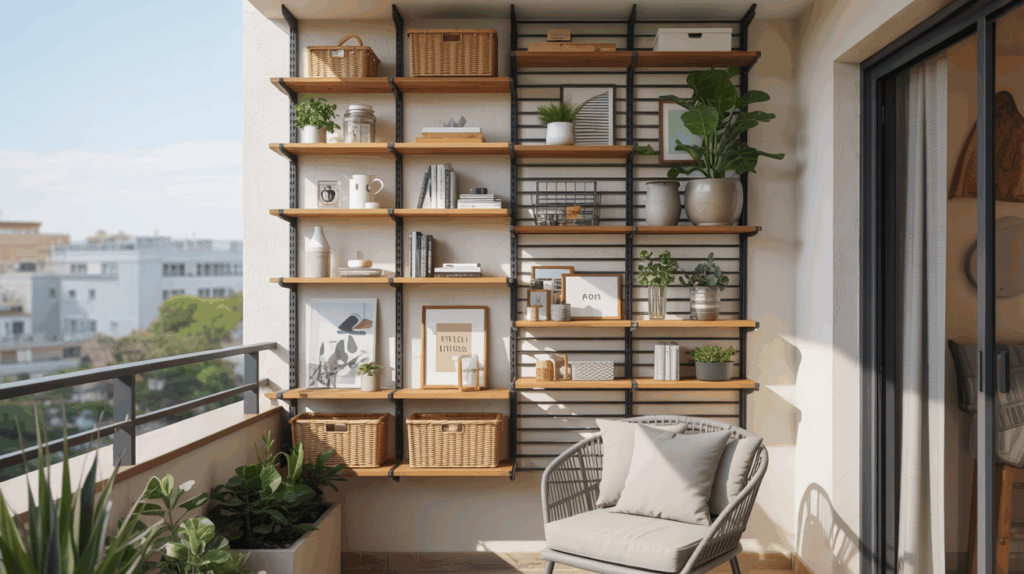
Multi-functional Furniture for Storage and Seating
A practical approach to compact balconies is to combine storage and seating in one unit, so you reclaim floor space without sacrificing comfort. You’ll select multi-functional pieces that reveal hidden storage when needed, yet stay clean-lined and comfortable for daily use. Prioritize modular forms that adapt to traffic flow, with hinges and lids engineered for smooth operation. Emphasize decorative storage that doubles as seating support, avoiding clutter. Choose space saving furniture with compact footprints, stable bases, and integrated cushions. Precision in alignment and clearance preserves sightlines, lighting, and access, delivering a cohesive, practical, and aesthetically balanced balcony environment.
Weather-Resistant Materials and Weatherproofing
Balcony climates demand materials that withstand sun, rain, and moisture without sacrificing form. You select weather-resistant materials that endure daily cycles, resisting corrosion, warping, and fading while keeping scale in mind. Prioritize coatings and finishes that deter moisture without trapping heat, and favor hardware rated for outdoor use to reduce maintenance. Think modular, removable components for reconfiguration, so your space stays resilient as seasons shift. You’ll grow plants and display decorative accents with confidence, knowing substrate and containment are sealed from moisture intrusion. Design decisions stay precise: test joints, clarify drainage, and minimize hidden gaps that invite damp, mold, or rust.
Clever Stowage Solutions for Small Items
Hidden wall shelves and stackable storage boxes let you reclaim floor space while keeping essentials within reach. Consider mounting slim shelves at waist height for quick-grab items, and choose stackables that nest neatly when not in use. This setup supports a clean, modular flow on a compact balcony.
Hidden Wall Shelves
Ever wonder how you can reclaim wall space without sacrificing floor area? Hidden wall shelves trim clutter by integrating storage into vertical planes. You select slim, recessed panels or shallow ledges that align with your balcony’s rhythm—shelving that feels like architectural detail, not furniture. Install at eye level for quick access, and position shelves to avoid doorways, railings, or planter shadows. Use concealed storage behind panels or within cantilevered bays to keep small items organized and out of sight. This approach preserves light and movement, while delivering practical, durable, and aesthetically coherent hidden wall shelves.
Stackable Storage Boxes
Stackable storage boxes transform tight balcony corners into organized micro-areas without taking up floor space. You optimize vertical potential by aligning boxes in modular stacking units, creating a predictable rhythm that respects sightlines and reach. Choose lids with non-slip bottoms to prevent shifting in breeze, and pair transparent fronts with labeling to sustain quick access. Consider stack height limits relative to railing clearance and door swing, avoiding obstructed paths. Use uniform dimensions for seamless interlocking, reducing visual clutter. This approach yields scalable storage, simplifies maintenance, and reinforces a design logic where every centimeter serves a purposeful function.
Modular and Flexible Storage Systems
Modular and flexible storage systems offer scalable solutions for tight balconies by combining activity zones with adaptable components. You design with intent: define zones for seating, maintenance, and display, then layer storage that shifts to needs. Customizable modularity lets you add or remove units without reworking the core structure, preserving sightlines and access. Flexible configuration supports seasonal changes, so you reconfigure quickly for hobbies or guests. Use standardized connectors and low-profile elements to minimize footprint while maximizing capacity. Prioritize modular modules that align with edge-to-edge surfaces, enabling efficient cleaning and maintenance. This approach keeps circulation clear and space legible.
Lighting and Accessibility for Easy Use
To guarantee easy use on compact balconies, integrate lighting and accessibility as a single, spatially informed system: place low-profile, glare-free luminaires along edges and under overhangs to guide circulation without interrupting sightlines, then use motion or daylight-responsive controls to adapt brightness as you move through zones. You optimize natural illumination by aligning fixtures with route lines, reducing glare and shadows at thresholds. Choose lighting fixtures that stay discreet yet effective, preserving storage volumes. Prioritize tactile switches and reachable heights. This approach supports clear wayfinding, quick access, and flexible use, ensuring durable performance without visual clutter.
Maintenance and Seasonal Refreshes
On compact balconies, routine upkeep should read like a spatial check: inspect each storage module and surface for wear, grime, and misalignment, then refresh coatings, seals, and gaskets to preserve durability and weather resistance while preserving usable volume. You assess hinges, fasteners, and weather seals, schedule seasonal decor changes, and align modules to prevent interference with airflow. Implement cleaning routines that target grip, drain points, and gasket edges, using noncorrosive cleaners. Rotate items to distribute load evenly, refresh labels, and document suspension points. Plan timely replacements, store ventilation-safe materials, and maintain consistent appearance for enduring, functional exterior living space.
Conclusion
You’ve mapped the balcony like a compact studio—precise dimensions, clear zones, and a logic for use. By prioritizing essentials, leveraging vertical space, and choosing weatherproof, modular pieces, you’ve created storage that’s flexible and legible at a glance. Multi-functional furniture keeps seating light and storage deep, while thoughtful access and lighting ensure daily tasks stay effortless. Sustain it with seasonal refreshes, and your balcony storage will remain organized, resilient, and inviting in every weather and season.
